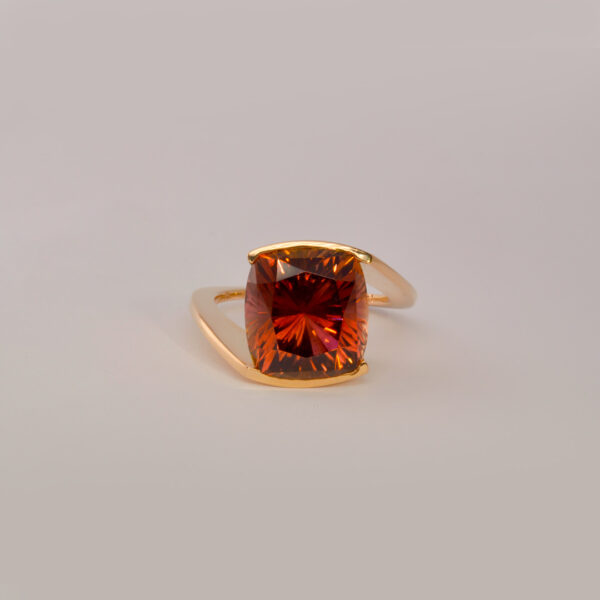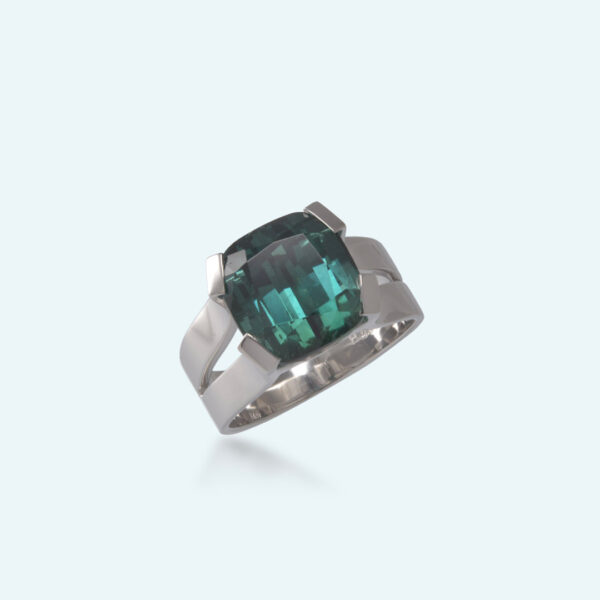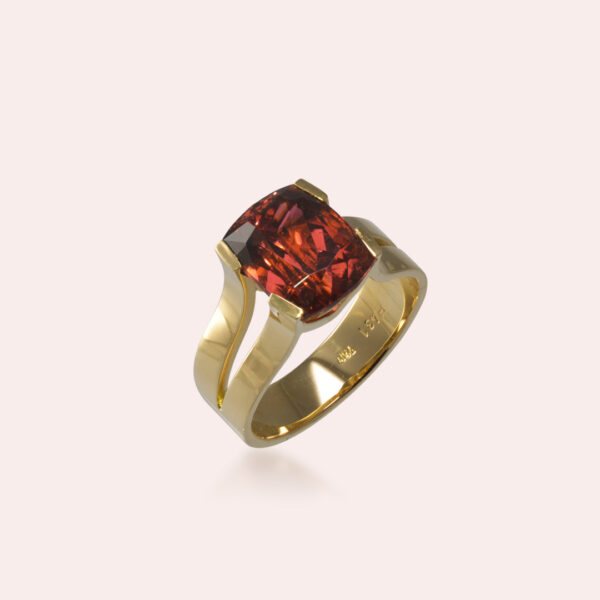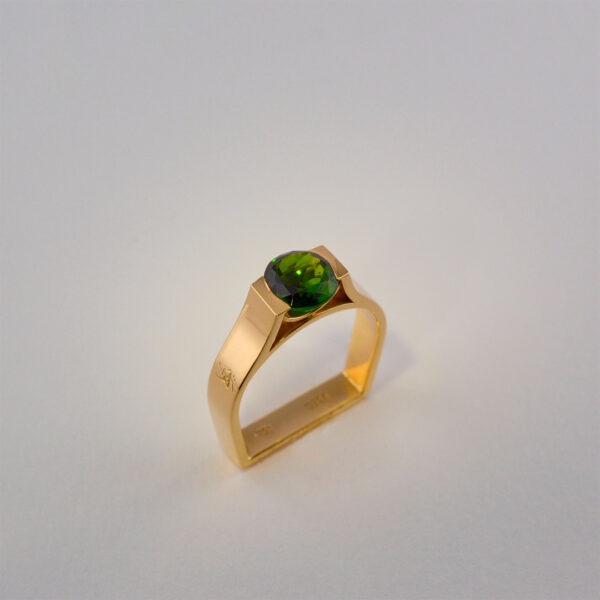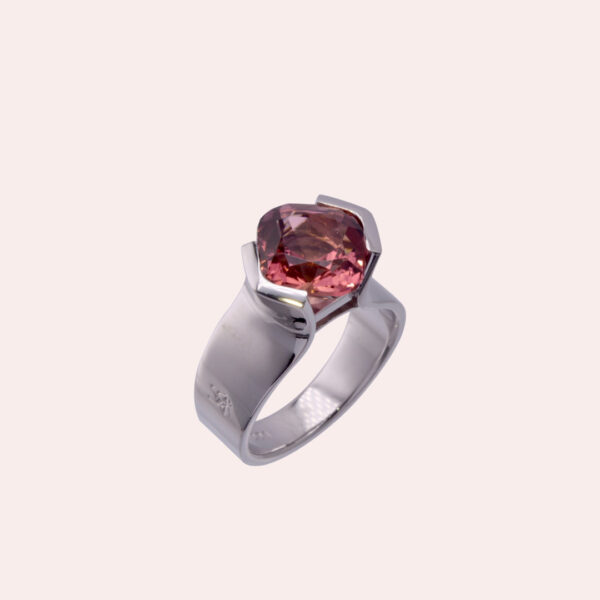Tourmaline Ring
Discover my pieces featuring this multicoloured stone.
The tourmaline stone, a fantastic stone family.
The Tourmaline family is a fascinating stone family. It exists in practically all colours, which makes it a wonderful centre stone for a ring.
It is particularly interesting given the exceptional range of colours that it offers.
Firstly, because they are extremely varied and are often found with a very intense hue.
Secondly, because it is possible to find stones naturally displaying three shades at once.
And finally, because a single stone can exhibit a different colour depending on what angle it is observed at. This remarkable quality is called pleochroism.
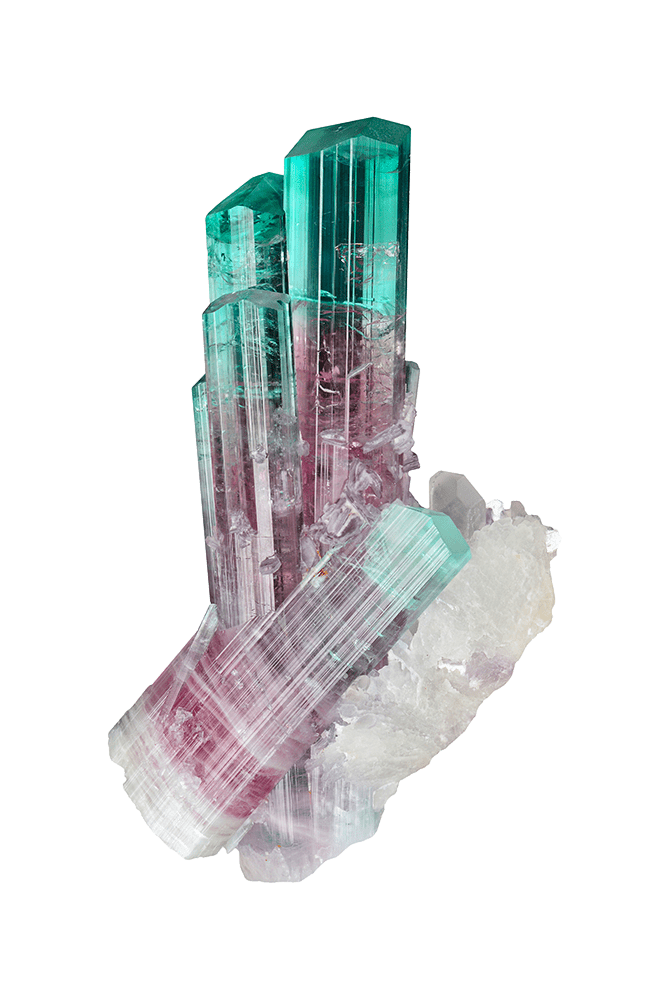
This exceptional variety in colour is due to chemical elements that the crystal is exposed to during its growth, which affect its composition.
Different tourmaline stones are given different names depending on their colour or where they come from. For example, Rubellite is for a pink or red complexion, Verdelite for a green hue and Indigolite for the bright, petrol-blue that is found only very rarely in other types of stones.
Hardness :
7 – 7,5
Origin :
Brazil, Madagascar, Afghanistan, Pakistan, India, Australia
Refractive index :
1,614 – 1,666
The Paraiba Tourmaline
I hold a special place in my heart for the Paraiba tourmaline.
In the 90s a deposit produced a variety of electric blue and green stones, an extremely unusual colour. Naturally it ran out very fast.
For the anecdote – when I was at jewellery school this deposit had just been discovered, and stone negotiators were trying to sell these stones that nobody wanted. This is how I was able to acquire my first Paraiba tourmaline stones. Not long after, these became highly sought-after stones that can now easily cost more than diamonds.
More recently, two deposits boasting the same-coloured stones have been found in Nigeria and Mozambique.
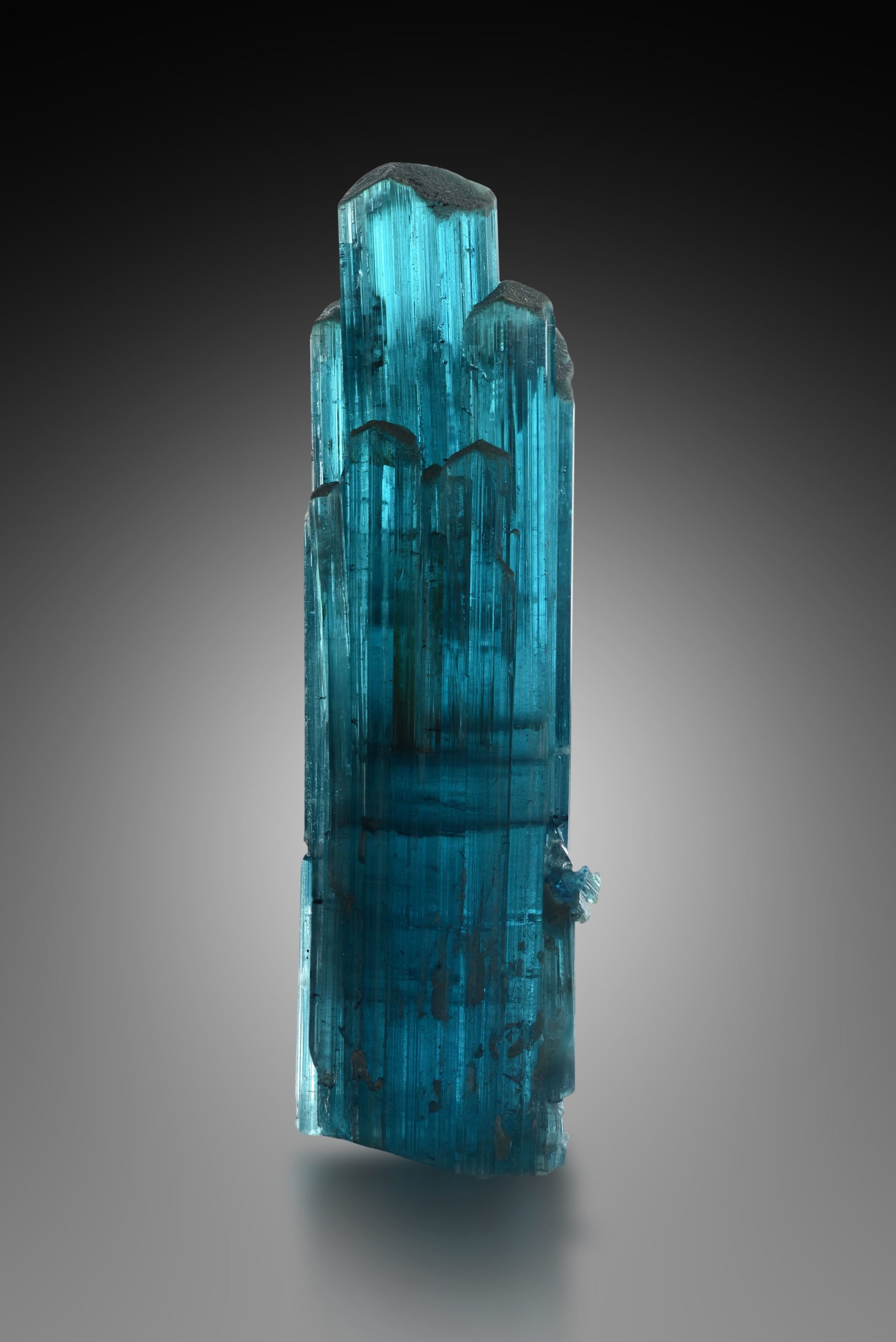
A stone that lends itself to large formats
Tourmaline crystals have elongated forms, so they are more often cut into long rectangles rather than cubes. Depending on the colours that they display, they can be cut parallel or perpendicular to their axe in order to accentuate the pleochroism (variation of colour depending on the angle of lighting) in the rough stone. The way it has been cut will make it possible to distinguish two colours that would not necessarily have been visible had the stone been cut the other way.
It is a stone that lends itself to larger formats, and I most often use it as a centre stone in rings. I try to seek out the most remarkable colours, which make each stone entirely unique.
The quality of a tourmaline stone lies above all in a beautiful colour rather than a dazzle. For a more sparkling stone, it is recommended to look towards a corundum or spinel stone.
It is in the more voluminous stones that the colour is best admired. It is also possible to find beautiful cabochons in larger formats with some inclusions that lend a little more life to the stone.



